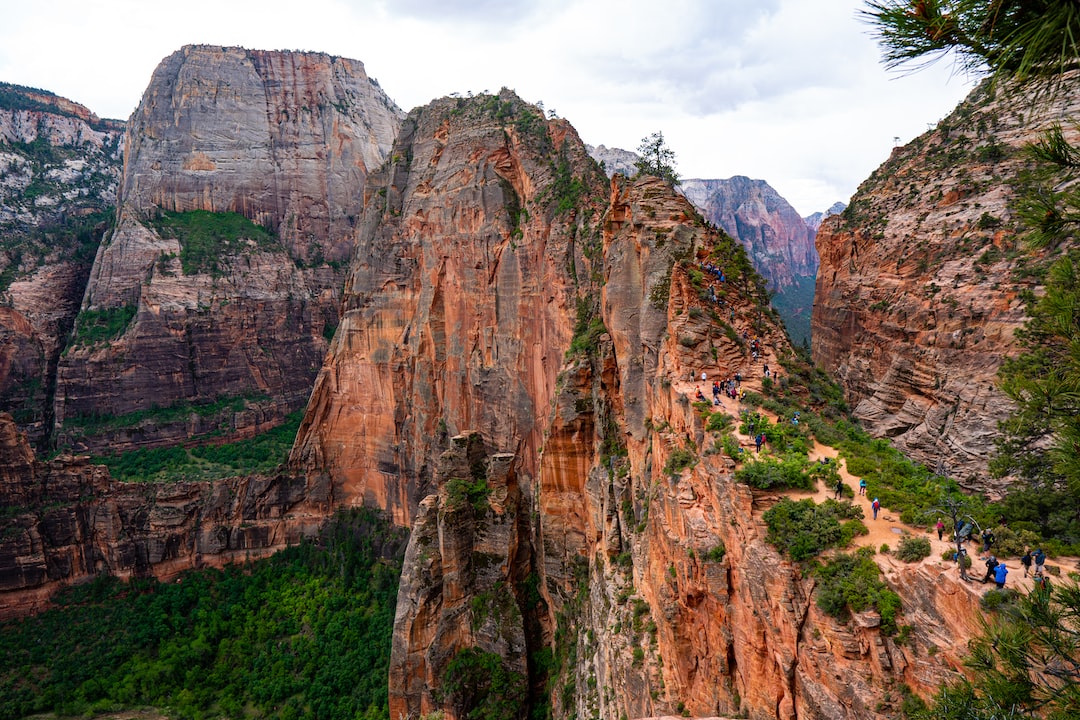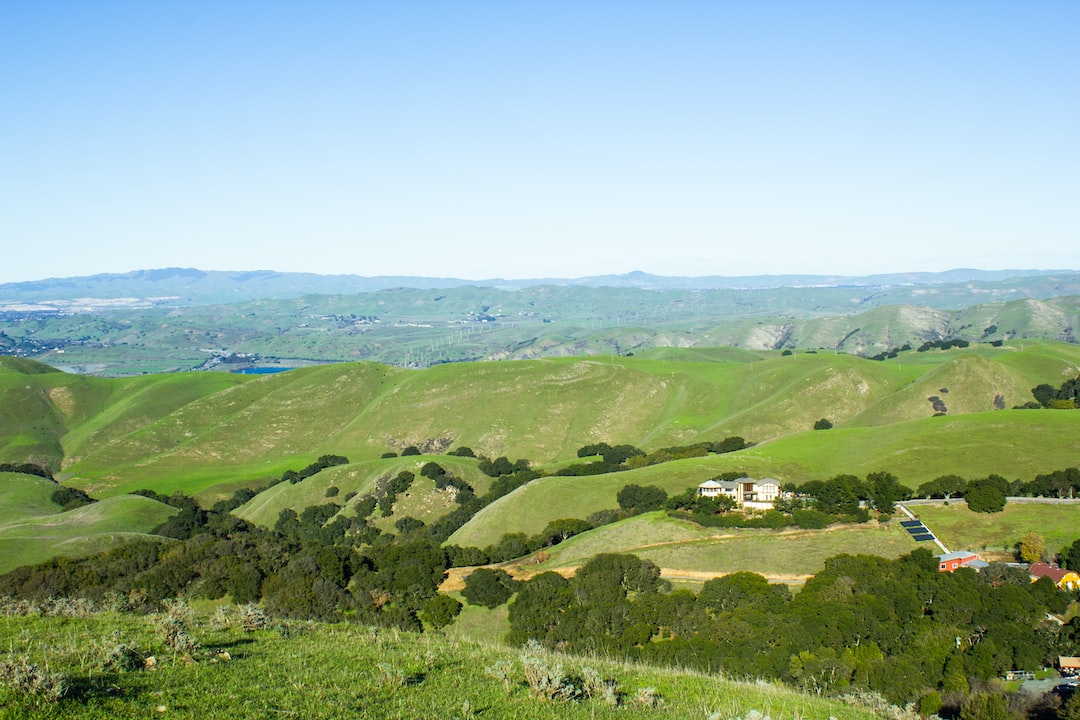Heading out for a day hike or a backpacking trip and wondering if you should get a pair of trekking poles and how to use them correctly?
Trekking poles are sticks that you walk with and hold in each hand to help you walk further and faster. Hiking poles provide extra points of contact with the ground to support your knees and give you more traction on the mountain.
To use them reach out with your arms, place the pole on the ground ahead of you and then step forward with your foot. Continuously repeat this on both sides as you walk forward.
How to setup your poles
Using poles is pretty straightforward and intuitive but there are few key things to get right which will make using them much more enjoyably.
1. 90-degree rule
Almost all trekking poles are extendable which will allow to set them up at the right height. Ideally, you want your poles to come up to your hand comfortably when your arm is bent at the elbow by 90 degrees.
With your arm at 90 degrees the grip should comfortably come up to your hands and the tip should be resting on the ground. When hiking downhill you’ll benefit from extending your poles a bit and the opposite is true when walking uphill (more on this below).
Another way to get the right pole height is by using multiplying your height by .68 in centimeters.
- Your height (cm) * .68 = Pole length
2. Remember the marking
Most poles have markings which indicate how extended they are in CM/Inches. Take a mental note of this number so you can easily extend them to this each time you get them out ready for the hike ahead.
You can always mark your preferred heights for downhill and uphill by using marking a line in pen so it’s easy to notice.
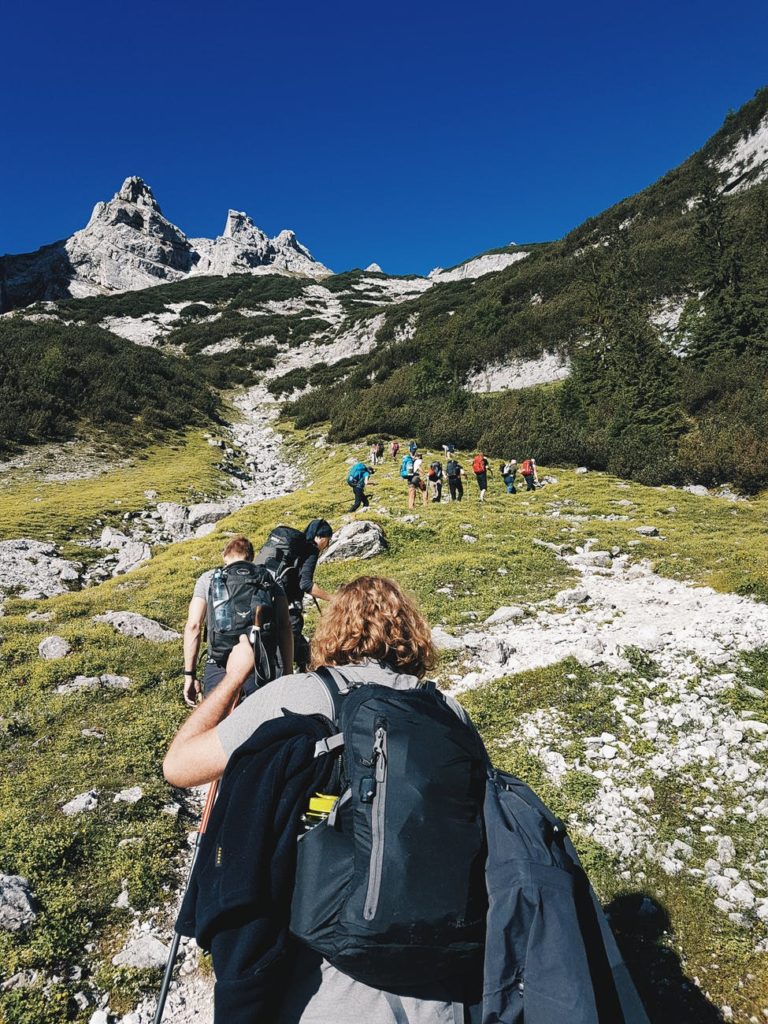
3. Tightening your trekking pole
When adjusting the height it’s important to have it locked in properly so it doesn’t slip and cause injury. Different poles using different mechanisms, but usually, it involves:
- Opening the clasp;
- Rotating it clockwise or anticlockwise to get the correct tension;
- Closing it so all the way for a tight fit. (If the tension is too high or too loose the clasp won’t lock properly. )
Here are the other types of trekking pole locks;
Twist lock: Uses an expander and screw to lock the pole into place.
Push-button lock: Poles with this locking mechanism snap into place and lock with a single pull. Press the push button to release the lock and collapse the poles. Some of these poles do not adjust in length.
Combination lock: Some poles use a combination of two locks. For example, a pole might use an external lever lock on the upper shaft and a twist lock on the lower shaft.
4. Using your wrist strap properly
The wrist strap on hiking poles are there to help transfer load and weight as you use the poles. This allows you to walk comfortably without having to hold the poles really tight with the grip of your hand. You hold the grip similar to how you would hold a ski pole.
How to wear your wrist strap:
- Put your hands through the strap hole from the bottom upwards.
- Grip the pole so that the end of the strap sits between you and the grip.
- The strap should now be comfortably be wrapped around your wrist.
If the strap is too tight or lose you can adjust the length by pulling the tension block out. This is usually done by holding the strap and pulling straight up from the pole. Once this part is removed you’ll be able to tighten and or loosen the strap making the hole smaller or larger. You may need to try a few different sizes before getting the right grip.
If your grip is too tight it will reduce blood circulation in your hands and leave a mark. Have it too loose and the strap won’t be helping you grip your poles properly.
A properly adjusted strap should be tight enough to help support the weight of your hand on the pole.
Bonus: Take the rubber cap off!
When you buy poles from the store or get them shipped to you in the post – they will often have a rubber cap at the bottom of the poles. This is here to stop the pole damaging the box or other items when in transit.
When you’re ready to use your poles, you can remove this rubber cap so that the tip (usually carbide) is exposed. This will then allow the pole to have much greater traction when your hiking over dirt and rocks. (The rubber grips are only good for protecting the carbide when walking on concrete).
Note: How often should you adjust your poles?
Now there is no need to continually adjust your poles every time you’re going up or down a path – but it is worthwhile if you’ll be walking uphill or downhill for a sustained period of time.
Tips for walking uphill
If you’re hiking uphill then there are a few key tips making your poles work better for you.
1. Make your poles shorter
When walking uphill your poles will sit more comfortably if you reduce the height slightly so that your elbows can still be comfortably bent at 90 degrees. You’ll benefit from a slightly shorter pole because they will naturally sit higher in the ground ahead of you.
2. Walk a-symmetrically
The best method of pole walking is to put your opposite pole out after each step. So left pole forward and then right foot forward and repeated. This is the more natural way to walk and most hikers will naturally get into this pattern without instruction.
Some hikers may find that they’re putting their pole forward as they put their foot forward but this doesn’t feel very comfortable and won’t offer nearly as much stability. The only time this is useful technique is when you’re stepping up onto a ledge – which will reduce leg fatigue.
Proper pole technique:
- Place one pole forward and follow with the opposite foot.
- Move the pole and the foot together when stepping up or down ledges.
Bonus: Zig-zags
A tip I got from a hiking buddy is to have one pole slightly longer than the other when hiking zig zags paths. This allows you to alternate them at each turn for greater leverage.
Tips for walking downhill
1. Make your poles longer
When walking downhill the terrain ahead is always lower than you so to maintain a comfortable grip it’s a good idea to slightly increase the length of your poles. (not on every descent, just for sustained periods of moving downhill).
By increasing the length of the pole, you can make traction with the ground and have your arms not outstretched too far in front of you.
2. Hands over poles grips
When your heading downhill you can adjust your grip to better suit your angle of momentum. Rather than gripping the poles head-on with the grip, it makes sense for a more comfortable movement to have your hands within the grips but clasped over the top of your poles.
3. Keep your poles wider apart
You need more stability when descending because gravity is constantly pulling you down. To combat this and maintain stability on rocky terrain you’ll often benefit from holding your poles slightly further apart. This helps spread your weight around your body rather than being direct directly in front of you.

Tips for walking on flat
1. Grip in front of the tip
When walking on flat terrain, your poles can help you with your forward propulsion. Angle your poles in a way that the grip is more forward than the tip. This roughly translates to a 70-degree angle.
If you put your tip first, you’ll have less leverage and you walking will be less efficient.
Weight distribution
Pole are great at taking away some pressure from our legs and involving other parts of our body. That said don’t rely too heavily on your poles when distributing your weight.
Placing too much weight on your poles can lead to injury or falls if they slip. You can rely on your poles most of the time but prepared to react to any slips or poor pole placements.
If your pole slips between two rocks, try to pull it out or fall away from the pole to avoid snapping it or hurting yourself with the pressure of landing on the grip.
P.S If you’re still on the fence about whether you should get a pair of trekking poles, here are the main pros and cons:
Reasons to use trekking Poles
There are a number of reasons to use trekking poles. They’re not essential but many hikers use them because they make hiking safer and more enjoyable.
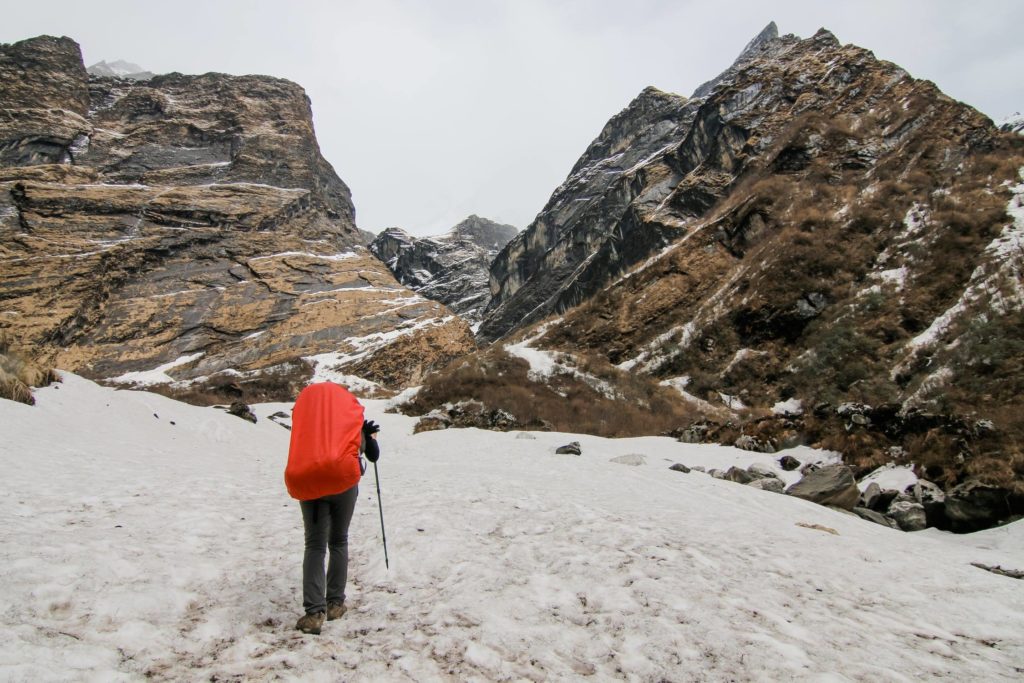
1. Poles protect your knees
Every time we take a step forward our knees must take some of this impact. Over thousands of steps, the strain and pressure on our knees can build up and cause long-term damage. By using trekking poles, our knees are better protected.
When using poles the weight of each step is distributed between two extra points of contact and we can absorb this energy with our upper body.
2. Poles give you more balance
Like when skiing, poles provide extra points of contact with the ground which provides more traction at all times. If you lose a footing, start to slip on loose rock or need and extra support when walking through a stream.
Poles help steady yourself and reduce your chances of falling over and causing injury. This extra balance means you can walk faster on more challenging terrain.
3. Poles set a steady pace
When using poles many hikes enjoy a sense of rhythm and flow that is harder to get without poles. The 1-2 movement of reaching out with one hand with each step sets momentum and guides an enjoyable and steady pace when hiking.
P.S I cover even more benefits of trekking poles here.
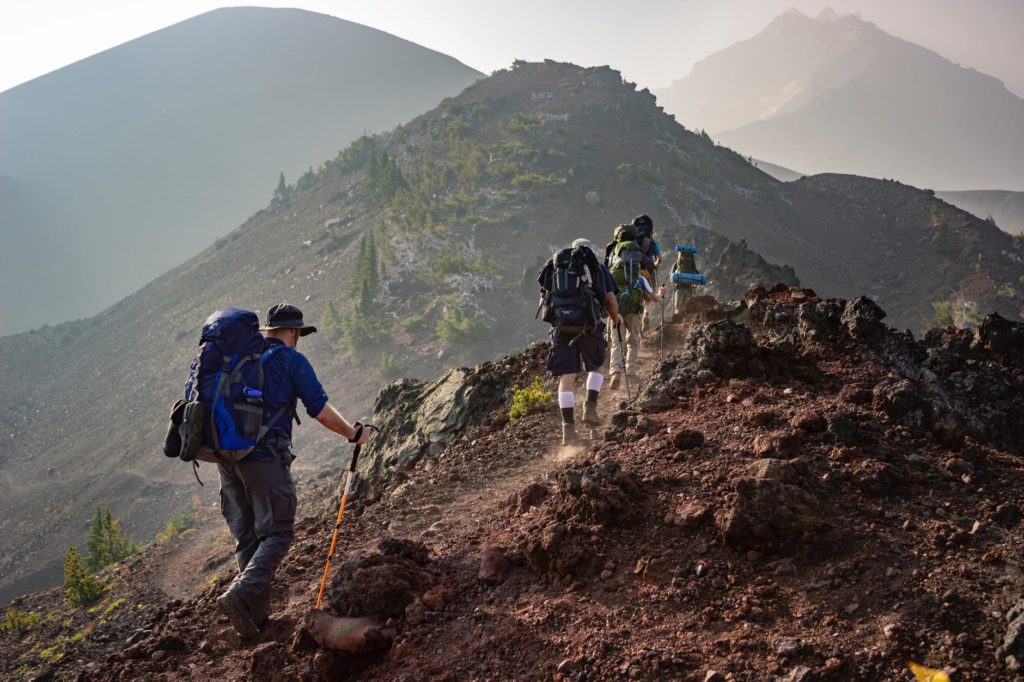
Arguments against trekking poles
With all the positive things to say about hiking poles are there any arguments against using them?
Sure there are some negatives. First, it’s an extra weight to carry and secondly using poles does increase your energy output – although the caveat to this is that you’ll be hiking further and most people don’t perceive the extra energy output.
For short works or day hikes, I generally don’t use poles. But for longer hikes or multi-day trips, I found bringing my trusty pair of poles really useful.
How to choose a trekking pole
There are hundreds of different poles out there from ultralight carbon fiber (more expensive) to durable aluminum (more common).
Truth is as long your buying a pole that is strong enough and can handle lots of wear and tear – it’s going to serve you well.


